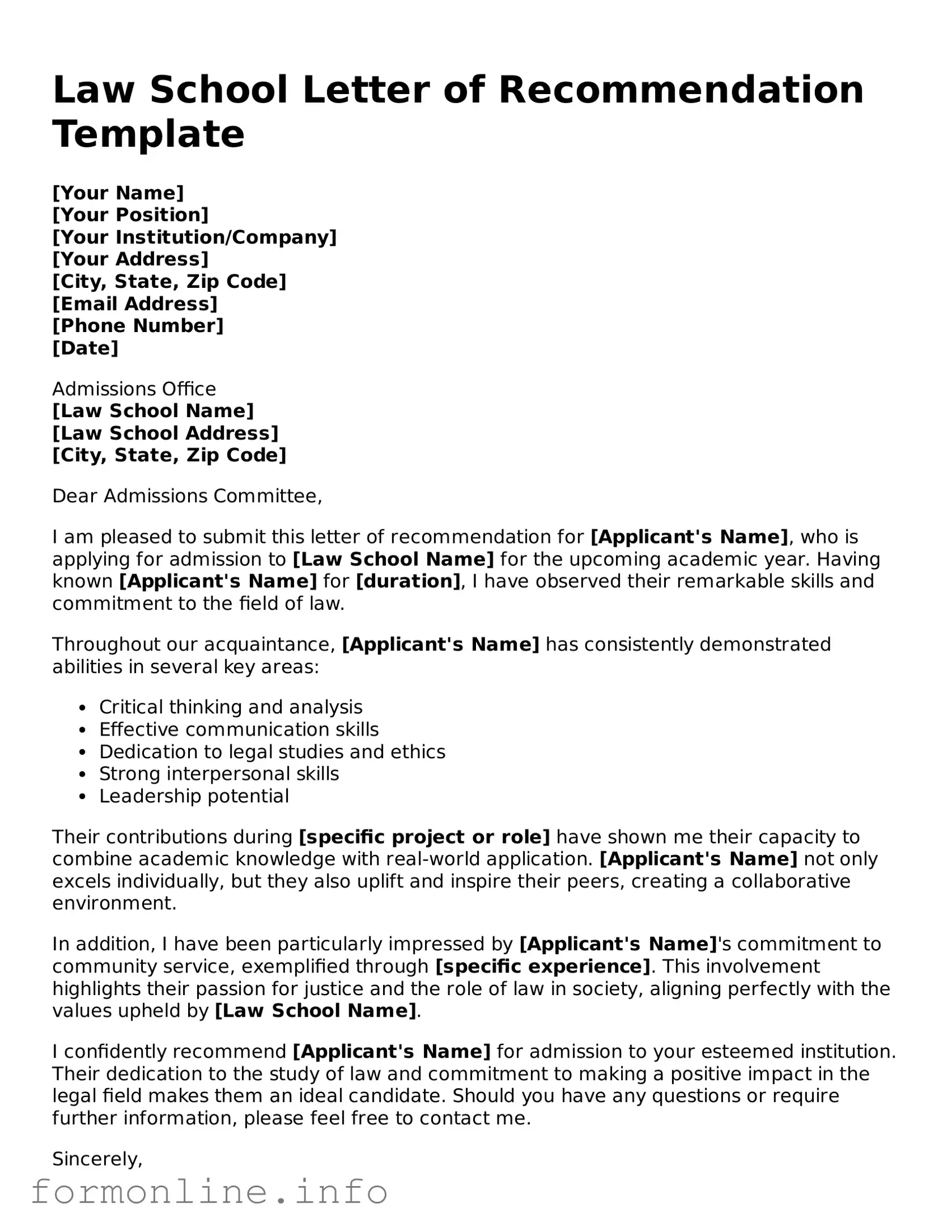Law School Letter of Recommendation Template
[Your Name]
[Your Position]
[Your Institution/Company]
[Your Address]
[City, State, Zip Code]
[Email Address]
[Phone Number]
[Date]
Admissions Office
[Law School Name]
[Law School Address]
[City, State, Zip Code]
Dear Admissions Committee,
I am pleased to submit this letter of recommendation for [Applicant's Name], who is applying for admission to [Law School Name] for the upcoming academic year. Having known [Applicant's Name] for [duration], I have observed their remarkable skills and commitment to the field of law.
Throughout our acquaintance, [Applicant's Name] has consistently demonstrated abilities in several key areas:
- Critical thinking and analysis
- Effective communication skills
- Dedication to legal studies and ethics
- Strong interpersonal skills
- Leadership potential
Their contributions during [specific project or role] have shown me their capacity to combine academic knowledge with real-world application. [Applicant's Name] not only excels individually, but they also uplift and inspire their peers, creating a collaborative environment.
In addition, I have been particularly impressed by [Applicant's Name]'s commitment to community service, exemplified through [specific experience]. This involvement highlights their passion for justice and the role of law in society, aligning perfectly with the values upheld by [Law School Name].
I confidently recommend [Applicant's Name] for admission to your esteemed institution. Their dedication to the study of law and commitment to making a positive impact in the legal field makes them an ideal candidate. Should you have any questions or require further information, please feel free to contact me.
Sincerely,
[Your Signature]
[Your Printed Name]
[Your Position]
